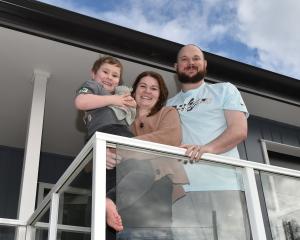Otago Polytechnic’s campus could be cut in half as part of efforts to make the institution financially viable, consultants have recommended.
Deloitte’s recommendations on behalf of the Tertiary Education Commission come at a time when Otago Polytechnic is undergoing major restructuring.
In order to make enough savings to be financially viable, Deloitte recommends Otago Polytechnic reduce its land area by 60% and built area by about 50%.
This could include the Ralph Hotere Cottage, listed as a category 2 historic place, being sold off as part of a "wide-scale divestment".

The report was compiled by consultancy firm Deloitte as part of the TEC’s government-mandated viability process, which took place in 2024 and earlier this year.
Otago Polytechnic executive director Megan Potiki said its property portfolio was assessed by Colliers, and the analysis at that time found there were "limited opportunities to easily consolidate the Dunedin campus footprint".
"However, the Deloitte report did raise a series of potential divestment opportunities, which Otago Polytechnic is continuing to work through."
Otago Polytechnic intended to sell the Cromwell Town campus and on-site accommodation and to consolidate operations at the Bannockburn site after the 2025 academic year.
"This work is continuing, noting that Otago Polytechnic needs to comply with the Public Works Act in any sale decision which is a complex process."
From early 2026, the Kōwhai Centre would move to free space on the sixth floor of H Block at the main Dunedin campus, which already housed other social services staff.
"This will allow for the student counselling programme to grow, as the current programme is restricted in numbers due to available space."
The Ralph Hotere Cottage was an ageing asset that would require significant capital to maintain it to an acceptable standard, she said.
Affected staff and students would be accommodated within G Block at the main campus from next year, where there was free space in more up-to-date buildings.
Meanwhile, moving out of the St David St and Forth St properties would enable Otago Polytechnic to lower its operating costs and proceed with sale processes next year.
Other former Otago Polytechnic sites exited this year included 79 Harrow St (general storage and workshop) and 20 Parry St (carpentry yard), and it would exit the lease on 182 Union St (plumbing and electrical yard) by January.
"Outside of these properties, we are not expecting any other changes in the short term, although we will continue to be focused on utilising our footprint as best as possible across our campuses."
Former Otago Polytechnic chief executive Phil Ker was puzzled by the report’s recommendations.
"As someone who spent 16 years trying to find money and save money and all that sort of thing for Otago, I don’t believe that there is any significant surplus land in Dunedin, and I don’t believe that there is significant surplus buildings."
The proposed reductions in land could have been driven by the belief that online learning was the answer, Mr Ker said.
"The future is one with more online learning, but not the totality of learning being online learning."
There was an "artificially created sustainability crisis", he said.
"It’s a no-win for anyone because you could solve today’s artificial crisis and the government could create a new one next year by deciding actually the economy is even worse so they won’t bother providing any inflation adjustments to cost or anything of that nature and you’re back where you started."
Green MP Francisco Hernandez said he was worried about the moves to reduce the polytechnic’s footprint.
"The proposal to downsize Otago Polytechnic and shift towards online delivery is deeply concerning — the value of vocational education is hands-on learning with input from industry and wider community.
"Closing facilities and reducing the footprint goes against the very ethos of vocational education."











